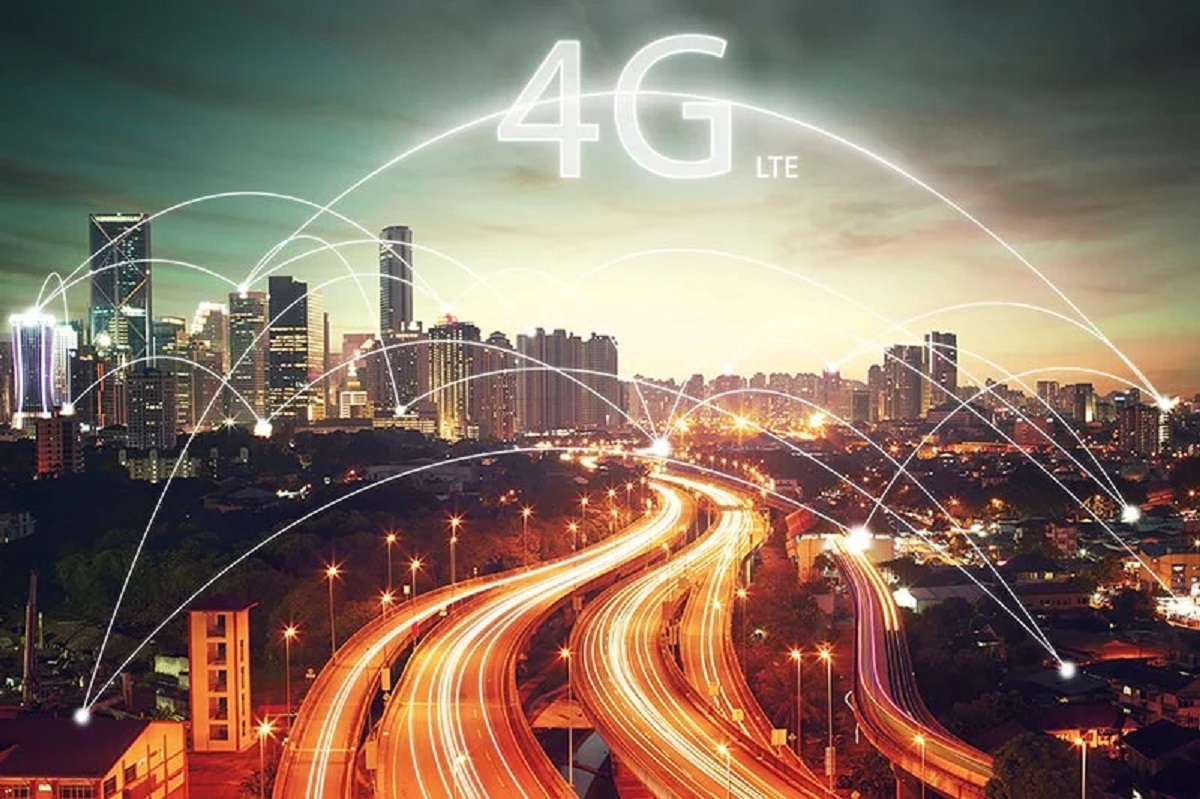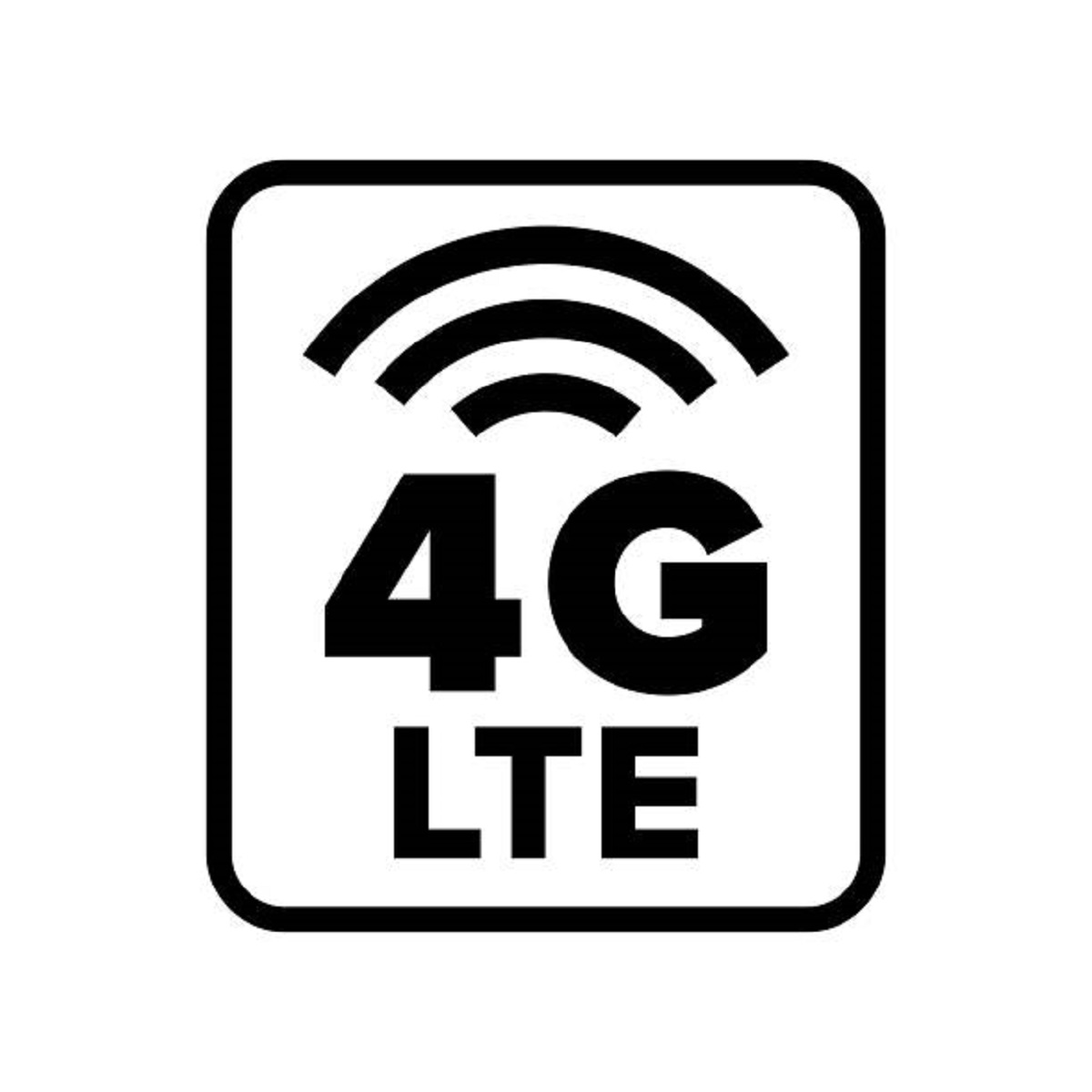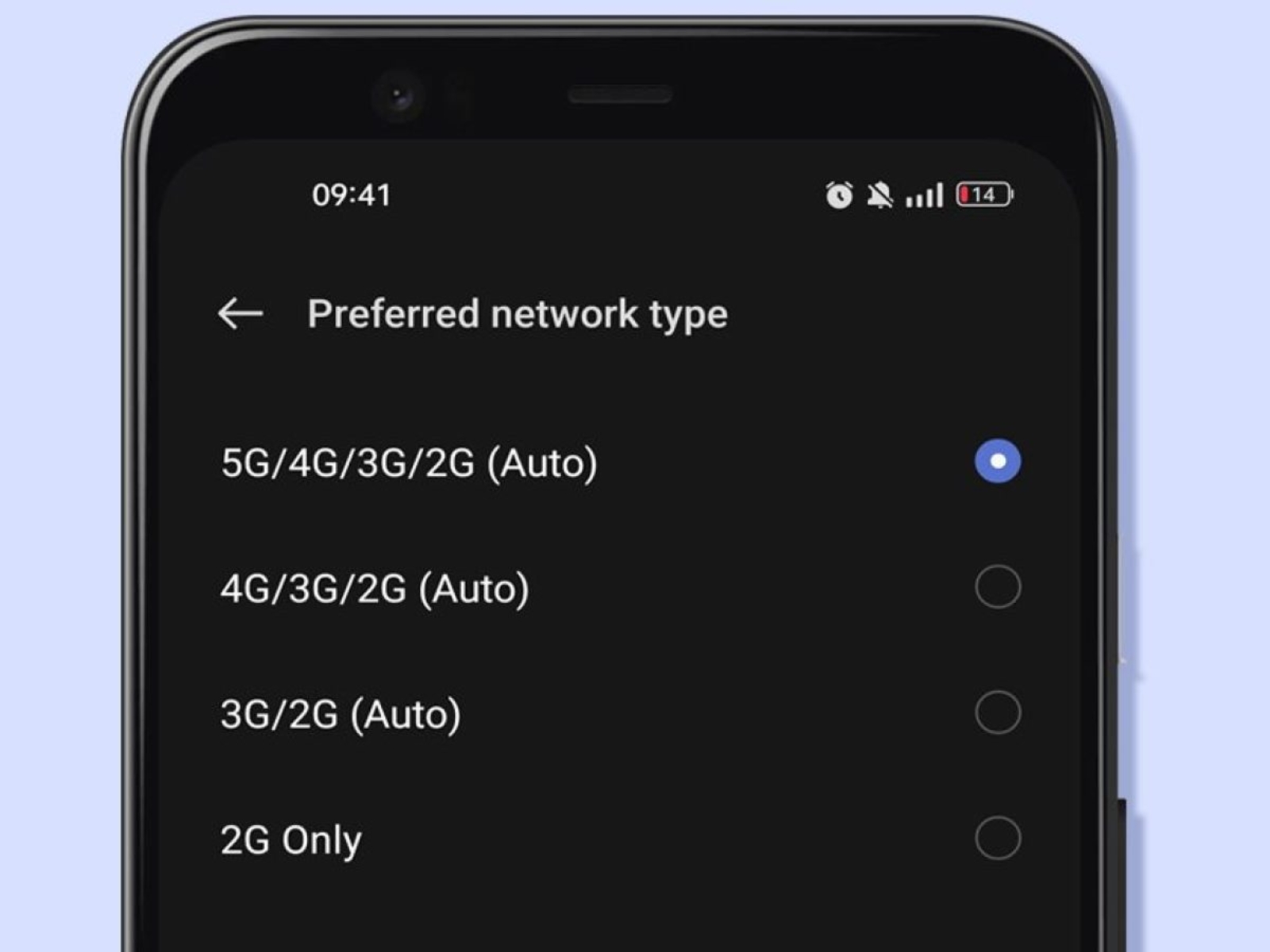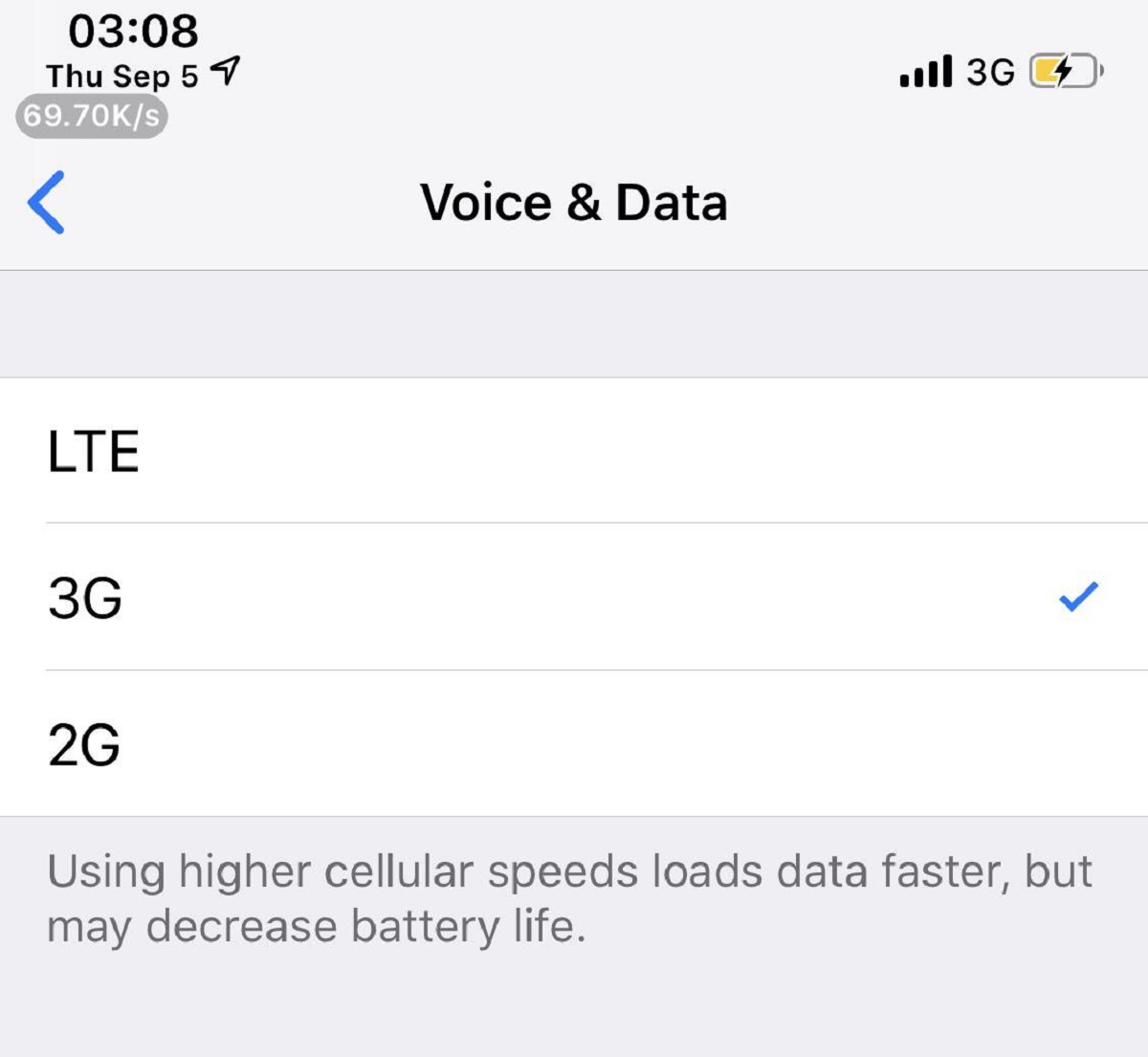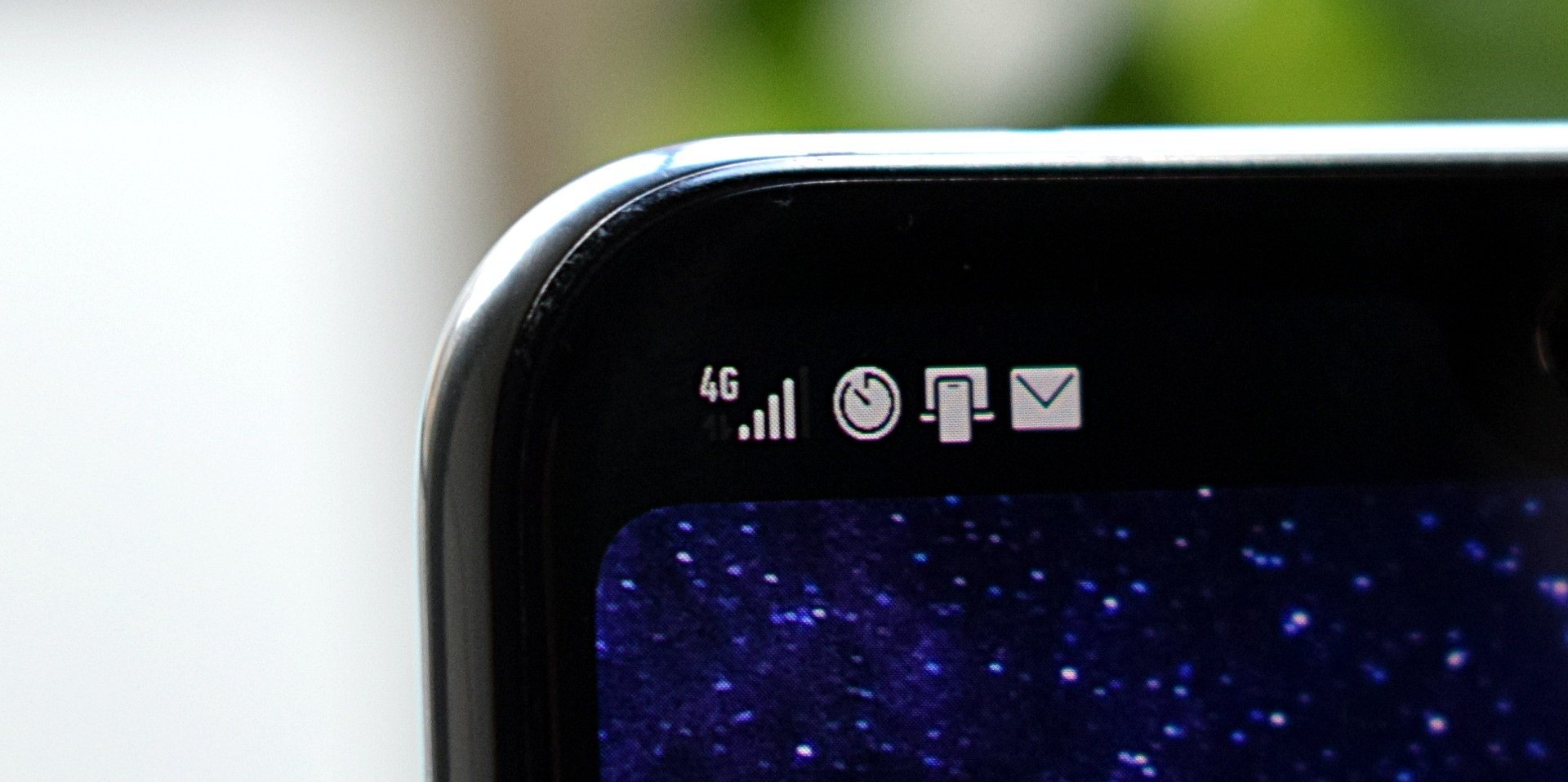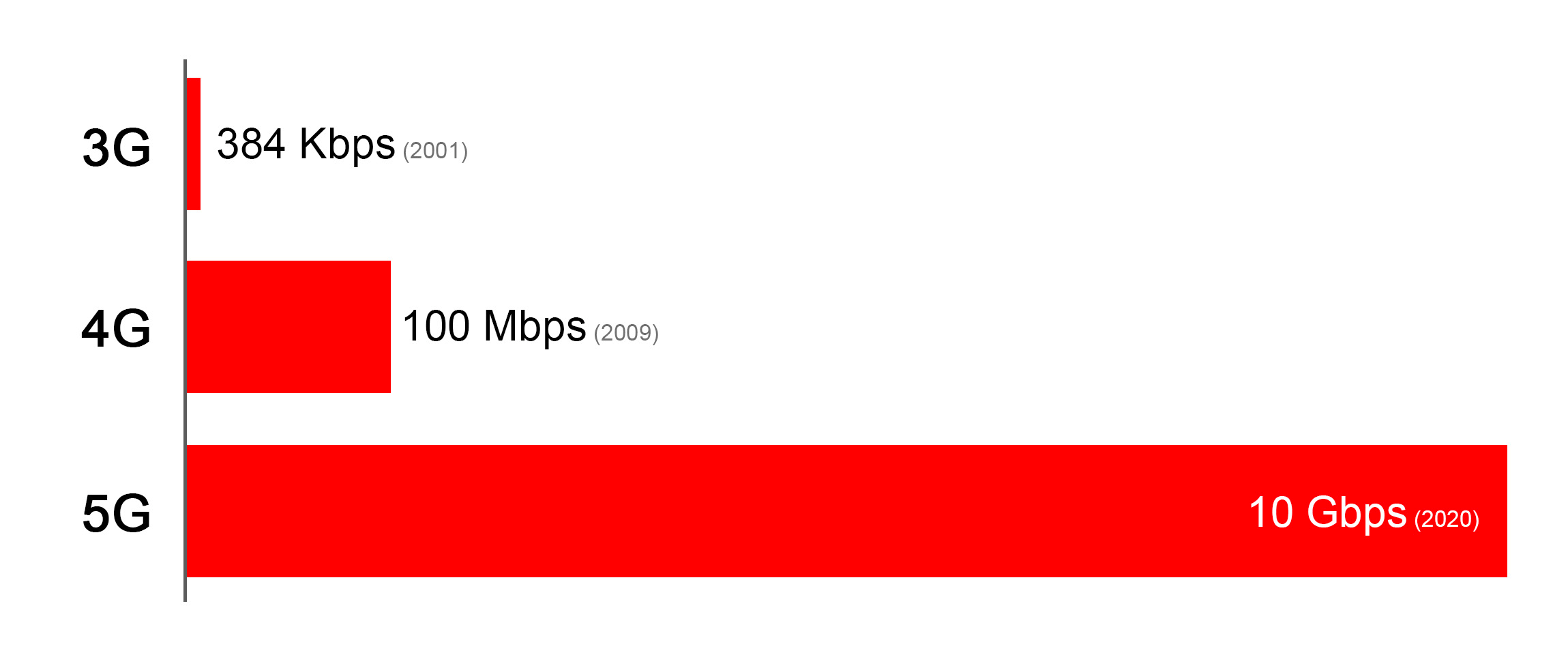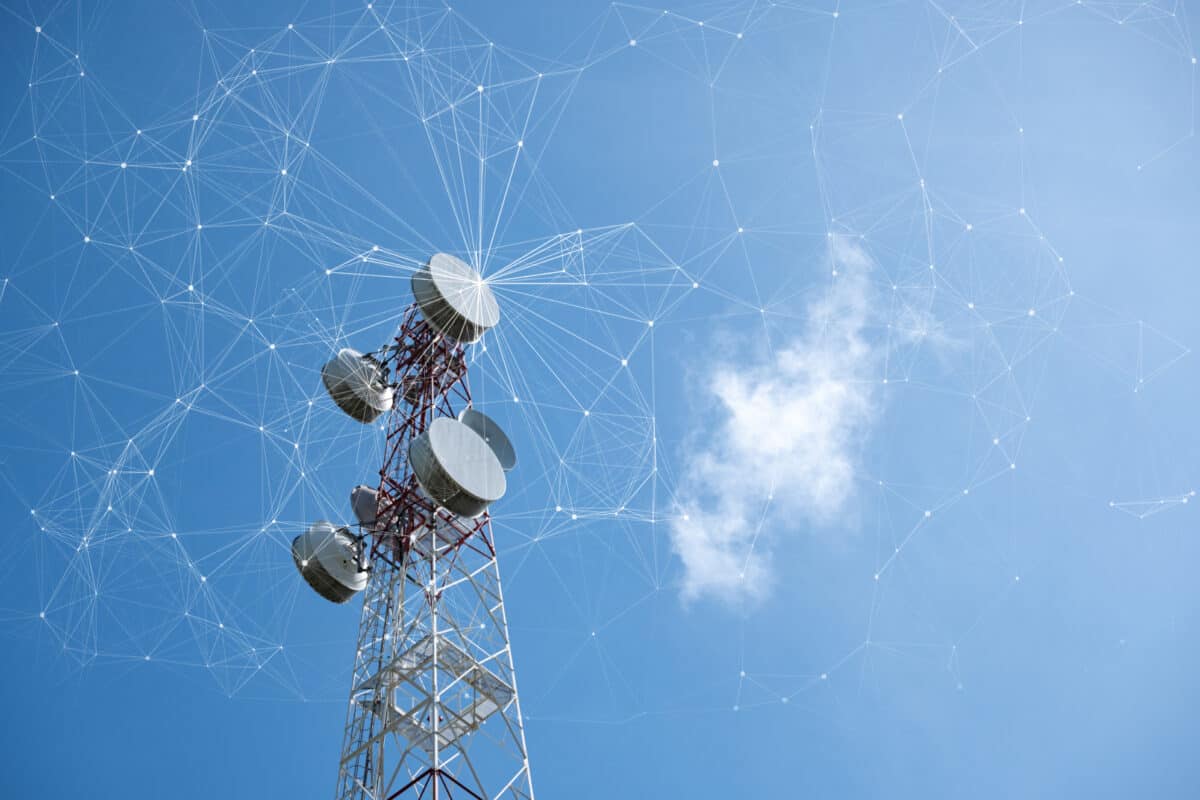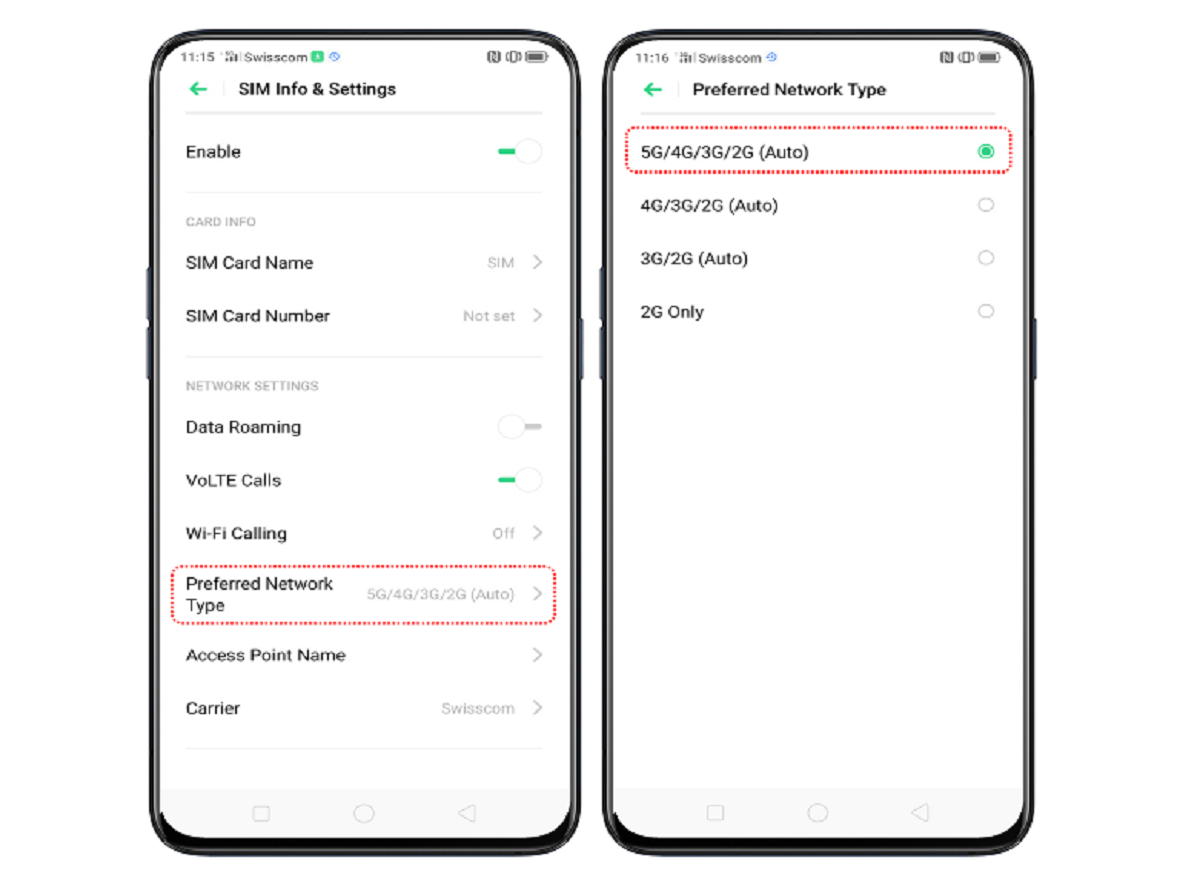Introduction
Welcome to the world of advanced mobile communication! Over the past few years, our lives have become increasingly connected and reliant on our smartphones and other mobile devices. We use them to communicate with loved ones, access information, stream media, and so much more. But have you ever wondered how all of this is possible? The answer lies in the evolution of mobile networks.
From the initial 2G networks that allowed us to make calls and send text messages, to the more advanced 3G networks that brought us internet browsing and email capabilities, mobile networks have constantly evolved to meet our growing demands. And now, we have the fourth generation, or 4G, network.
But what exactly is 4G and why is it so important? In this article, we will explore the definition, features, advantages, and disadvantages of 4G network. We will also discuss the key differences between 4G and its predecessors, the standards and technologies that power 4G, the applications and services enabled by this network, and the exciting possibilities that the future holds for 4G.
So, whether you are a tech enthusiast, a business owner, or simply curious about the world of mobile communication, join us as we delve into the fascinating world of the 4G network.
Definition of 4G Network
4G, short for fourth generation, refers to the latest and most advanced mobile network technology available to consumers. It is a significant leap forward from the previous generations of mobile networks, 2G and 3G. The International Telecommunication Union (ITU) defines 4G as a network that provides a substantial increase in data transfer speeds, enabling seamless connectivity for various applications.
One of the key defining features of 4G is its ability to deliver faster data speeds compared to its predecessors. While 3G networks offered download speeds of up to a few megabits per second, 4G networks have the potential to provide download speeds in the range of tens or even hundreds of megabits per second. This enhanced speed allows for quicker loading times and smoother streaming of high-definition videos and audio.
In addition to faster data speeds, 4G networks also offer improved network capacity and reliability. This means that users can experience better call quality, reduced call drops, and a more seamless browsing experience, even in crowded areas with high network traffic.
Another defining characteristic of 4G is its support for a wide range of advanced technologies and services. These include voice over Long-Term Evolution (VoLTE) for high-quality voice calls, Video over LTE (ViLTE) for high-resolution video calls, and multimedia messaging services (MMS) for sending and receiving rich media content.
Furthermore, 4G networks are designed to be more efficient in terms of power consumption. This means that devices connected to a 4G network can enjoy longer battery life compared to those connected to previous generations of networks. This is particularly beneficial for users who heavily rely on their smartphones throughout the day and don’t want to constantly worry about running out of battery.
Overall, the definition of 4G network revolves around its ability to deliver significantly faster data speeds, improved network capacity and reliability, support for advanced technologies and services, and efficient power consumption. With these advancements, 4G networks have opened up a world of possibilities and have transformed the way we connect and communicate in our daily lives.
Evolution of Mobile Networks
The evolution of mobile networks has been a remarkable journey, constantly pushing the boundaries of what is possible in terms of wireless communication. It all began with the advent of the first generation, or 1G, network, which was introduced in the 1980s. 1G networks were analog-based and primarily focused on enabling voice calls.
However, the limitations of 1G soon became apparent, and thus, the second generation, or 2G, network was developed. 2G introduced digital technology, which brought about significant improvements in call quality, security, and capacity. It also introduced the concept of short messaging services (SMS), allowing users to send text messages for the first time.
As the demand for mobile data grew, the third generation, or 3G, network emerged. 3G networks were designed to support data-intensive applications such as email, internet browsing, and multimedia services. This paved the way for the widespread adoption of smartphones and the rise of mobile internet usage.
However, with the rapid advancements in technology and the increasing demand for faster connectivity, it became evident that a new generation of mobile networks was needed. This led to the development of the fourth generation, or 4G, network.
4G networks represent a significant leap forward in terms of speed, capacity, and capability. They are built on the Long-Term Evolution (LTE) technology, which offers a more efficient and robust wireless communication infrastructure. With 4G, users can experience faster download and upload speeds, improved call quality, and seamless connectivity for a wide range of applications.
Moreover, the evolution of mobile networks didn’t stop at 4G. The fifth generation, or 5G, network is now on the horizon. 5G is set to revolutionize the way we connect and communicate, offering even higher data speeds, lower latency, and the ability to support a massive number of devices simultaneously. It will enable groundbreaking technologies such as autonomous vehicles, remote surgeries, and the Internet of Things (IoT).
As we witness the continuous evolution of mobile networks, it is clear that the pace of technological advancement shows no signs of slowing down. Each new generation brings about transformative changes, enabling us to stay connected, access information, and enjoy a myriad of services like never before. The future holds endless possibilities, and it is exciting to be a part of this ever-evolving world of mobile communication.
Key Features of 4G Network
4G networks come with a host of advanced features that set them apart from their predecessors. These features contribute to the exceptional performance and user experience that 4G offers. Let’s explore some of the key features of 4G networks:
1. High-Speed Data Transfer: One of the primary features of 4G is its ability to deliver high-speed data transfer. With download speeds ranging from tens to hundreds of megabits per second, users can enjoy snappy web browsing, smooth streaming of high-definition videos, and quick downloads of large files.
2. Low Latency: 4G networks are designed to minimize latency, which refers to the delay experienced when data is transmitted from one point to another. Low latency ensures a more responsive and real-time connection, making activities like online gaming and video conferencing much more seamless and interactive.
3. Expanded Network Capacity: 4G networks have significantly increased network capacity compared to previous generations. This means that more users can be connected simultaneously without experiencing a degradation in performance. It enables smoother browsing, faster downloads, and better call quality even in areas with high network congestion.
4. Advanced VoLTE and Video Calling: 4G networks support Voice over Long-Term Evolution (VoLTE) technology, which allows for high-quality voice calls over the data network. Additionally, Video over LTE (ViLTE) enables high-resolution video calls, providing users with a more immersive and lifelike communication experience.
5. Multi-Media Messaging Services (MMS): 4G networks enable the seamless transmission of rich media content through MMS. Users can easily share photos, videos, and audio files with others, enhancing communication beyond simple text-based messages.
6. Enhanced Security: 4G networks incorporate improved security measures to protect users’ data and privacy. Encryption technologies are utilized to ensure that sensitive information remains secure during transmission, offering users peace of mind when browsing the internet or making online transactions.
7. Seamless Roaming: 4G networks provide seamless roaming capabilities, allowing users to stay connected even when traveling between different regions or countries. This feature ensures uninterrupted connectivity and enables users to access voice and data services wherever they go.
8. Energy Efficiency: 4G networks are designed to be more energy-efficient, leading to extended battery life for devices connected to the network. This is particularly beneficial for smartphone users who rely heavily on their devices throughout the day.
These key features make 4G networks a game-changer in terms of speed, capacity, reliability, and functionality. They have transformed how we connect, communicate, and consume content, revolutionizing our mobile experience and paving the way for a more connected future.
Advantages of 4G Network
4G networks offer a wide range of advantages that have revolutionized the way we connect and communicate. These advantages have made 4G the preferred choice for many users. Let’s explore some of the key advantages of 4G networks:
1. Faster Speeds: The most noticeable advantage of 4G is its significantly faster data transfer speeds. With download speeds ranging from tens to hundreds of megabits per second, users can enjoy faster web browsing, smooth streaming of high-definition videos, and quick downloads of large files.
2. Seamless Connectivity: 4G networks provide seamless connectivity, even in areas with high network congestion. Users can experience better call quality, reduced call drops, and a more reliable browsing experience, ensuring they stay connected at all times.
3. Improved User Experience: The high-speed and low-latency nature of 4G networks enhance the overall user experience. Activities like online gaming, video conferencing, and multimedia streaming become much more enjoyable and interactive due to reduced lag and faster response times.
4. Enhanced Voice and Video Calls: 4G networks support advanced technologies like VoLTE and ViLTE, which enable high-quality voice and video calls. Users can experience crystal-clear voice calls and high-resolution video calls, making communication more immersive and lifelike.
5. Rich Media Content Sharing: With 4G, users can easily share rich media content through MMS, including photos, videos, and audio files. This enables more expressive and creative communication beyond traditional text-based messages.
6. Expanded Network Capacity: 4G networks have the ability to support a large number of users simultaneously without experiencing a degradation in performance. This expanded network capacity ensures smooth browsing, faster downloads, and better call quality even in crowded areas.
7. Access to Advanced Applications: 4G networks enable users to access a wide range of advanced applications and services. From real-time navigation to video streaming platforms and mobile gaming, 4G opens up a wealth of possibilities, transforming how we live, work, and entertain ourselves.
8. Increased Productivity: The fast and reliable connectivity of 4G networks enhances productivity for individuals and businesses alike. Users can access important information on the go, collaborate in real-time, and work efficiently from remote locations, boosting overall productivity.
9. Future-Proof Technology: 4G networks serve as a stepping stone towards the future of mobile communication. They provide a solid foundation for the upcoming 5G networks, ensuring that users are well-prepared to embrace and benefit from the advancements that lie ahead.
These advantages make 4G networks a game-changer in terms of speed, performance, and functionality. From faster speeds and seamless connectivity to enhanced voice and video calls and access to advanced applications, 4G has transformed the way we connect, communicate, and experience the digital world.
Disadvantages of 4G Network
While 4G networks offer numerous advantages, they are not without their disadvantages. It’s important to understand and consider these drawbacks before fully embracing the technology. Let’s explore some of the key disadvantages of 4G networks:
1. Limited Coverage: Although 4G networks have expanded rapidly, there are still areas where coverage is limited or unavailable. Rural or remote regions may have inadequate infrastructure and struggle to provide reliable 4G connectivity.
2. Higher Cost: 4G networks often come with higher costs compared to previous generations. This includes the cost of devices, data plans, and often additional charges for accessing high-speed data. The expense of upgrading all devices to be 4G-compatible can also be a burden for individuals and businesses.
3. Battery Drain on Devices: The faster speeds and enhanced functionality of 4G networks can lead to increased power consumption, resulting in quicker battery drain on connected devices. Users may find themselves needing to charge their devices more frequently, especially when engaging in data-intensive activities.
4. Network Congestion: As more users adopt 4G networks, network congestion can become a challenge, particularly in densely populated areas or during peak usage times. This congestion can result in slower speeds, reduced performance, and increased latency, ultimately impacting the user experience.
5. Compatibility Issues: Not all devices and applications are fully compatible with 4G networks. Older devices may not support 4G connectivity, requiring users to upgrade their devices or use additional equipment to access the network. Similarly, certain applications may require specific updates or adjustments to function optimally on a 4G network.
6. Security Concerns: The increased connectivity and reliance on 4G networks can expose users to potential security risks. As with any network, there is a possibility of data breaches, hacking attempts, and privacy concerns. Users must take precautions such as using secure connections, strong passwords, and keeping software and applications up to date to mitigate these risks.
7. Network Backhaul Limitations: The backbone infrastructure that supports 4G networks, known as backhaul, may face limitations in terms of bandwidth and capacity. This can result in slower speeds in certain areas, especially when many users are accessing the network simultaneously.
8. Transition Challenges: For countries or regions that are still in the process of transitioning from older generations of networks to 4G, there can be challenges in terms of infrastructure upgrades, compatibility, and overall implementation. Such transitions may take time and resources, causing disparities in 4G availability and performance across different locations.
It’s crucial to consider these disadvantages when evaluating the suitability of 4G networks for one’s needs. While the advantages of 4G are significant, understanding the potential drawbacks ensures informed decision-making and prepares users to navigate the evolving landscape of mobile connectivity.
Difference Between 4G and Previous Generations
The transition from previous generations of mobile networks to 4G has brought about significant advancements and improvements in terms of speed, capacity, and functionality. Let’s explore some of the key differences between 4G and its predecessors:
1. Data Transfer Speed: One of the most notable differences between 4G and previous generations is the increase in data transfer speeds. While 3G networks provided download speeds in the range of few megabits per second, 4G networks offer significantly faster speeds, ranging from tens to hundreds of megabits per second. This enables quicker downloads, smoother streaming of high-quality videos, and faster access to web pages and applications.
2. Network Capacity: 4G networks have significantly expanded network capacity compared to previous generations. This allows more users to simultaneously connect to the network without experiencing a degradation in performance. With increased capacity, 4G can handle higher volumes of data traffic, resulting in reduced network congestion and improved call quality.
3. Latency: Another key difference is the reduced latency in 4G networks. Latency refers to the delay experienced when data is transmitted from one point to another. In previous generations, latency was higher, resulting in slower response times and delays in activities such as online gaming and video calls. With 4G, latency is significantly reduced, enhancing real-time connectivity and enabling more interactive experiences.
4. Voice Quality: Voice calls on 4G networks are of superior quality compared to previous generations. 4G networks support Voice over Long-Term Evolution (VoLTE) technology, which allows for high-quality voice calls over the data network. Users can experience crystal-clear voice calls with reduced background noise, resulting in improved call clarity and a more enjoyable calling experience.
5. Coverage and Signal Strength: 4G networks generally provide better coverage and signal strength compared to previous generations. This is achieved through more extensive infrastructure development, including the installation of additional towers and antennas. As a result, users can enjoy stronger and more reliable signals in a wider range of locations.
6. Application Support: 4G networks are designed to support a wide range of advanced applications and services. This includes high-definition video streaming, multiplayer gaming, real-time navigation, and more. The increased speed, reduced latency, and expanded network capacity of 4G enable the seamless use of these data-intensive applications, providing users with enhanced digital experiences.
7. Energy Efficiency: 4G networks are more energy-efficient compared to previous generations. This means that devices connected to a 4G network consume less power during data transmission, resulting in improved battery life. Users can enjoy longer usage times and reduced battery drain, which is particularly beneficial for those who heavily rely on their mobile devices throughout the day.
These differences highlight the significant advancements and improvements that 4G networks bring when compared to previous generations. The faster speeds, increased network capacity, reduced latency, improved voice quality, and enhanced application support make 4G a transformative technology that has reshaped how we connect and interact in the digital world.
4G Network Standards and Technologies
4G networks are based on specific standards and technologies that enable their high-speed and reliable performance. These standards and technologies form the foundation of the network infrastructure. Let’s explore some of the key standards and technologies that power 4G networks:
1. LTE (Long-Term Evolution): LTE is the primary technology behind 4G networks. It provides a more efficient and robust wireless communication infrastructure compared to previous generations. LTE allows for faster data transfer speeds, improved network capacity, and reduced latency, resulting in a superior user experience.
2. MIMO (Multiple-Input Multiple-Output): MIMO technology is utilized in 4G networks to enhance the network’s capacity and coverage. It involves multiple antennas at both the base station and the user’s device, which allows for the transmission and reception of multiple data streams simultaneously. This technology significantly improves data throughput and signal quality in 4G networks.
3. OFDM (Orthogonal Frequency Division Multiplexing): OFDM is a key modulation scheme used in 4G networks. It divides the available radio spectrum into multiple smaller sub-carriers, each carrying a portion of the data. OFDM enables more efficient transmission and reception of information, minimizing the impact of interference and improving the overall performance of the network.
4. IP (Internet Protocol) Based Architecture: 4G networks are built on an IP-based architecture, allowing for seamless integration of various internet-based services and applications. This architecture enables end-to-end connectivity and ensures compatibility with the vast array of connected devices and applications that rely on IP protocols.
5. VoLTE (Voice over Long-Term Evolution): VoLTE is a technology that enables high-quality voice calls over 4G networks. It allows for simultaneous transmission of voice and data, eliminating the need for fallback to previous generations for voice calls. VoLTE delivers superior voice quality, reduced background noise, and faster call setup times, enhancing the overall calling experience.
6. IMS (IP Multimedia Subsystem): IMS is a framework used in 4G networks to enable the provision of multimedia services such as video calling and instant messaging. It provides a standardized architecture that allows for the seamless integration of various communication services over IP networks. IMS ensures interoperability and compatibility between different services and applications in the 4G ecosystem.
7. Carrier Aggregation: Carrier aggregation is a technique used in 4G networks to combine multiple wireless carriers to increase the overall bandwidth available for data transmission. It enables faster speeds and improved network capacity by utilizing different frequency bands simultaneously. Carrier aggregation enhances the efficiency of 4G networks, especially in areas with limited spectrum availability.
8. Security Protocols: 4G networks incorporate advanced security protocols to ensure data privacy and protection. These protocols include encryption, authentication, and integrity mechanisms that safeguard user information during transmission. By implementing robust security measures, 4G networks mitigate the risks of unauthorized access, data breaches, and identity theft.
These standards and technologies are the building blocks of 4G networks, enabling the high-speed, reliable, and efficient connectivity that we experience today. They form a sophisticated infrastructure that supports a wide range of applications and services, making 4G an essential tool for communication, productivity, and entertainment in the modern digital era.
Applications and Services Enabled by 4G Network
4G networks have unlocked a world of possibilities, enabling a wide range of applications and services that have transformed the way we live, work, and communicate. Let’s explore some of the key applications and services that are enabled by 4G networks:
1. Video Streaming and Content Consumption: 4G networks have revolutionized the way we consume video content. With faster download speeds and reliable connections, users can stream high-definition videos seamlessly on platforms such as YouTube, Netflix, and Hulu. 4G has also paved the way for live streaming events, allowing users to connect with their favorite content in real-time.
2. Online Gaming: 4G networks have made online gaming more accessible and enjoyable. Gamers can connect to multiplayer games, compete with players worldwide, and enjoy immersive gaming experiences with reduced lag and faster response times. The low latency of 4G ensures a smooth and responsive gaming session, enhancing the overall gaming experience.
3. Real-Time Navigation and Mapping: 4G enables real-time navigation services that utilize GPS data for accurate and up-to-date directions. Applications like Google Maps and Waze have become indispensable tools for travelers, providing turn-by-turn directions, real-time traffic updates, and location-based services.
4. Video and Voice Calls: 4G networks support high-quality video and voice calls. Applications like Skype, FaceTime, and WhatsApp allow users to make crystal-clear video calls, enabling face-to-face communication with loved ones, colleagues, and business partners. The improved voice quality ensures that users experience clear and distortion-free voice calls.
5. Cloud Services and Remote Access: 4G networks facilitate seamless access to cloud services, allowing users to store data and access files from anywhere. Applications like Dropbox, Google Drive, and Microsoft Office 365 enable users to collaborate on documents, access important files, and work remotely with ease, enhancing productivity and flexibility.
6. Mobile Payments and Banking: 4G has paved the way for mobile payment services, revolutionizing the way we make transactions. With applications like Apple Pay, Google Pay, and Samsung Pay, users can securely make purchases using their smartphones, eliminating the need for physical cards. Furthermore, 4G enables mobile banking services, providing users with the ability to check balances, transfer funds, pay bills, and manage their finances on the go.
7. Internet of Things (IoT) Applications: 4G networks play a vital role in facilitating the growth of the Internet of Things. IoT devices, such as smart home devices, wearables, and connected sensors, benefit from the fast and reliable connectivity provided by 4G. Users can control and monitor their devices remotely, enabling automation, energy efficiency, and enhanced convenience in various aspects of life.
8. E-commerce and Online Shopping: 4G networks have transformed the landscape of e-commerce and online shopping. Users can browse online stores, make purchases, and track orders in real-time from their mobile devices. Enhanced connectivity and faster speeds have made online shopping a seamless and convenient experience.
These are just a few examples of the countless applications and services that are made possible by 4G networks. As 4G continues to evolve and pave the way for 5G networks, we can expect even more innovative and transformative applications and services that will further shape the future of connectivity.
Future of 4G Network
The future of 4G networks holds promises of further advancements and continued relevance in the ever-evolving landscape of mobile connectivity. Despite the emergence of 5G networks, 4G is expected to remain prevalent and play a crucial role for years to come. Let’s explore the future of 4G networks:
1. Extended Coverage: Efforts are underway to further expand the coverage of 4G networks, particularly in rural and remote areas where connectivity is still limited. Increased infrastructure development and optimized deployment strategies will help bridge the digital divide and bring 4G connectivity to more people around the world.
2. Enhanced Speeds and Performance: The future of 4G networks will witness continuous enhancements in speeds and performance. As network technologies improve, users can expect even faster download and upload speeds, reduced latency, and improved network capacity. This will further enhance the user experience and enable the efficient utilization of data-intensive applications and services.
3. Seamless Integration with 5G: 4G networks will continue to seamlessly integrate with 5G networks, ensuring a smooth transition and compatibility for users. While 5G offers unprecedented speeds and low latency, 4G will serve as a reliable fallback for areas where 5G infrastructure is still in the early stages of deployment or where 5G coverage is limited.
4. Evolution of IoT Applications: 4G will continue to serve as a vital connectivity solution for Internet of Things (IoT) applications. As the number of IoT devices continues to grow, 4G networks will provide the necessary connectivity to support the vast ecosystem of connected devices, enabling automation, smart home functionality, and improved efficiency in various industries.
5. Advanced Security Measures: With the proliferation of data and connectivity, the future of 4G networks will prioritize advanced security measures to protect user data and privacy. Network operators will invest in robust encryption protocols, authentication mechanisms, and security frameworks to ensure the secure transmission of information and safeguard against evolving cyber threats.
6. Business and Enterprise Solutions: 4G networks will continue to cater to the needs of businesses and enterprises. They will provide reliable and high-speed connectivity for remote work, video conferencing, cloud-based services, and other business-critical applications. Additionally, 4G connectivity will support the growth of mobile commerce, enabling businesses to reach and engage with customers in new and innovative ways.
7. Continued Innovation: The future of 4G networks will witness ongoing innovation in applications and services. Developers will explore new use cases that leverage the capabilities of 4G networks, leading to the emergence of imaginative solutions in fields such as healthcare, education, transportation, and entertainment. These innovations will further enhance the value and utility of 4G networks for users.
While 5G networks are on the horizon, the future of 4G networks remains vibrant and promising. With extended coverage, improved speeds and performance, seamless integration with 5G, evolution of IoT applications, advanced security measures, tailored business solutions, and continued innovation, 4G networks will continue to serve as a reliable and essential connectivity solution for individuals, businesses, and industries across the globe.
Conclusion
The 4G network has revolutionized the way we connect, communicate, and experience the digital world. With its faster speeds, expanded network capacity, lower latency, and advanced features, 4G has transformed the landscape of mobile communication. It has opened up a wealth of possibilities and enabled a wide range of exciting applications and services.
From streaming high-definition videos and playing online games to making crystal-clear video and voice calls, 4G has enhanced our digital experiences. It has paved the way for real-time navigation, cloud services, mobile payments, IoT applications, and more. The seamless connectivity and improved user experience offered by 4G have reshaped how we live, work, and interact with our devices.
While the emergence of 5G networks promises even greater speeds and capabilities, 4G will continue to play a significant role for the foreseeable future. Its extensive coverage, reliability, and compatibility with a wide range of devices make it a continued staple in the mobile connectivity landscape. Additionally, 4G will seamlessly integrate with 5G, ensuring a smooth transition towards the next generation of wireless networks.
As we look towards the future, 4G will continue to evolve and adapt to meet the changing needs of users. This includes extended coverage to remote areas, enhanced speeds and performance, advanced security measures, tailored business solutions, and ongoing innovation in applications and services.
Whether it is for personal use, business operations, or societal advancements, the 4G network has become an integral part of our daily lives. It has connected us in ways we never thought possible, providing us with incredible opportunities and convenience. As technology continues to progress, the 4G network will remain a vital tool in keeping us connected, informed, and empowered in our fast-paced digital world.







